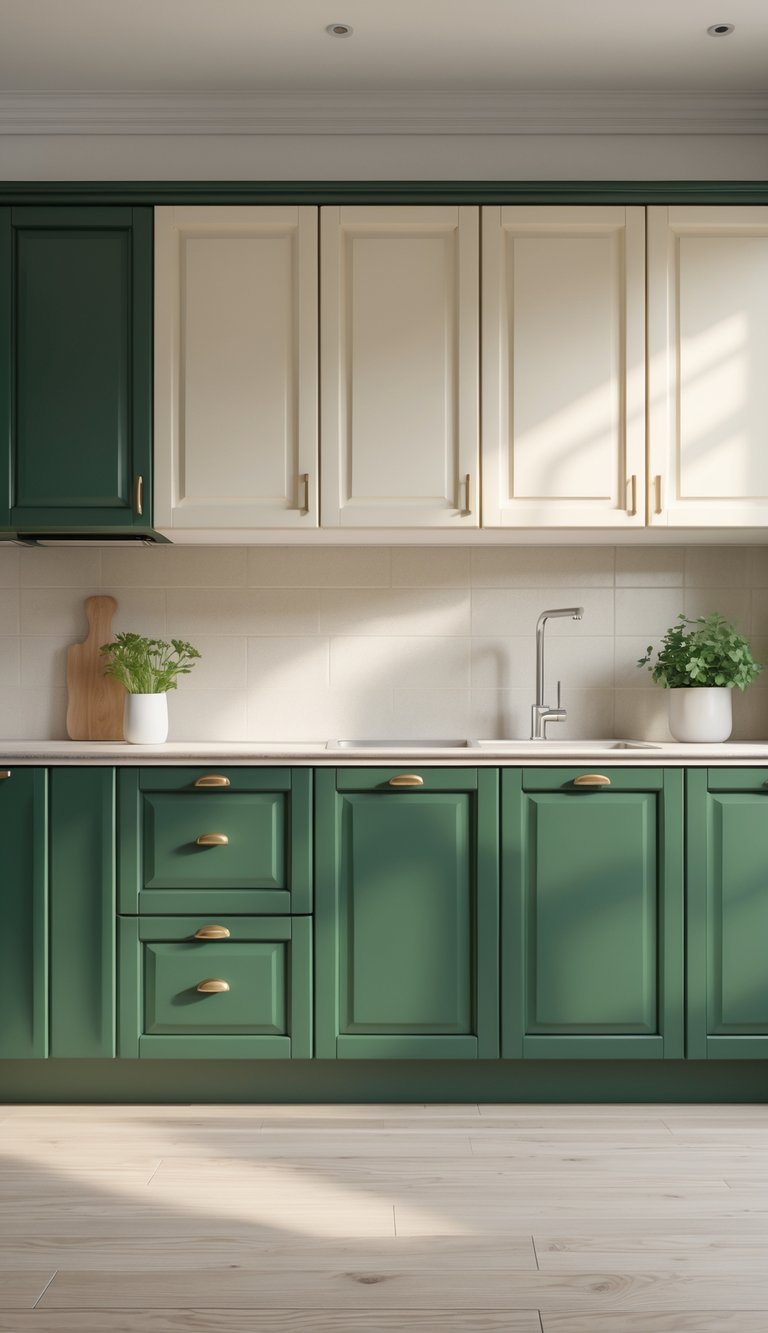15 Outdoor Kitchen Flooring Ideas to Elevate Your Patio Design
Creating a functional and attractive outdoor kitchen really starts with the right flooring. The flooring affects safety, comfort, and the overall vibe of the space.
Picking the best material can help blend style with durability to suit different outdoor needs.
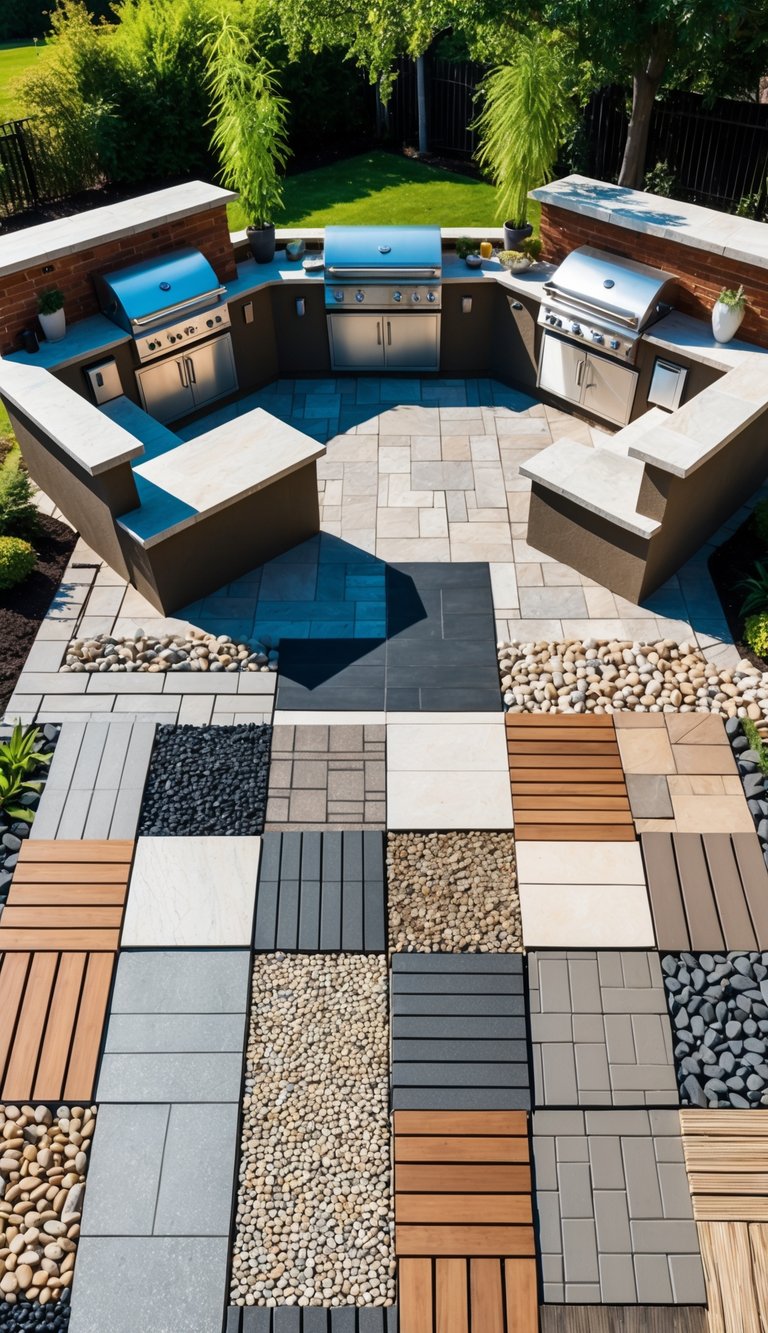
There are plenty of options, each with its own perks for design and function.
Whether you want easy maintenance, slip resistance, or a certain look, flooring really sets the tone for outdoor cooking and hanging out.
Christmas & Year-End Deals On Amazon !
Don’t miss out on the best discounts and top-rated products available right now!
*As an Amazon Associate, I earn from qualifying purchases.
1) Porcelain Tile Flooring
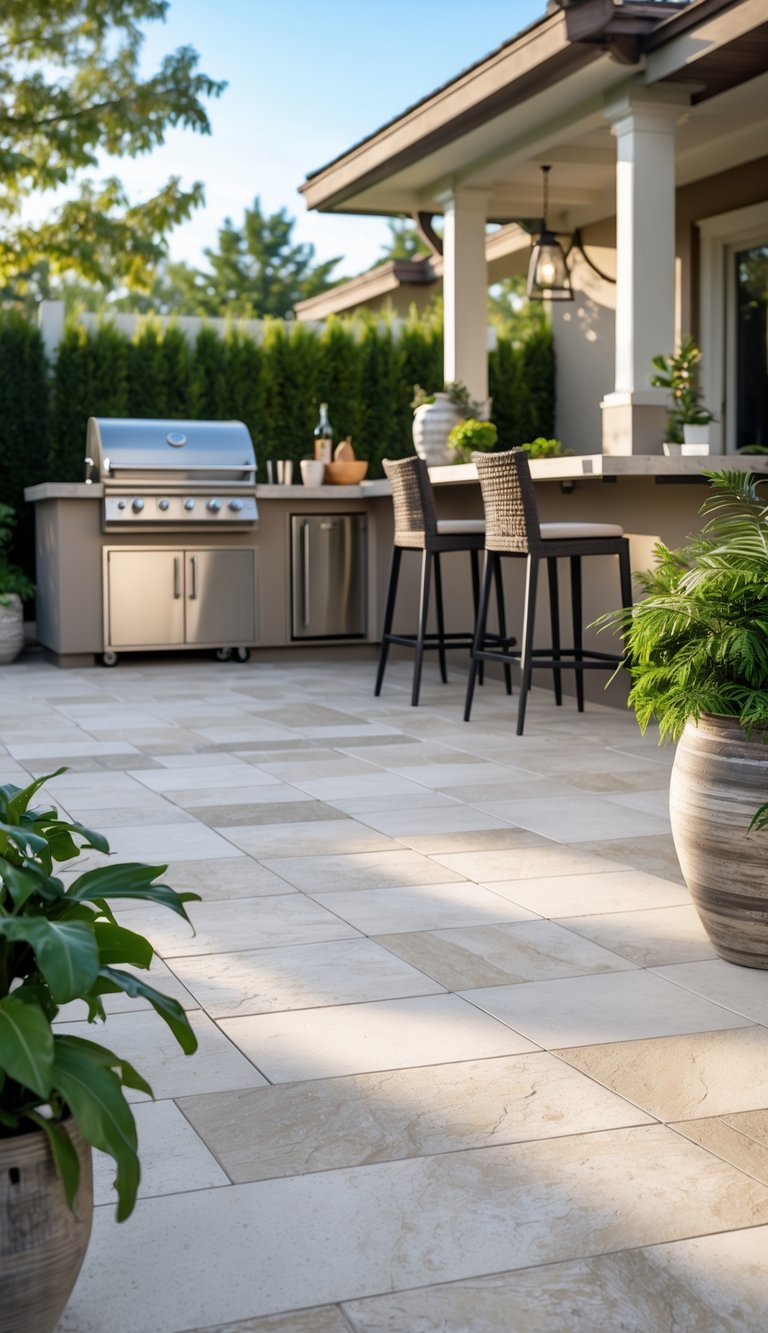
Porcelain tile is a go-to for outdoor kitchens. It’s tough and stands up to heat and cold swings.
You can find it in tons of designs, even ones that look like stone or wood. That makes matching your style pretty simple.
Porcelain handles moisture well, which means fewer slips. Plus, upkeep is a breeze—always a win outside.
2) Sealed Concrete Flooring
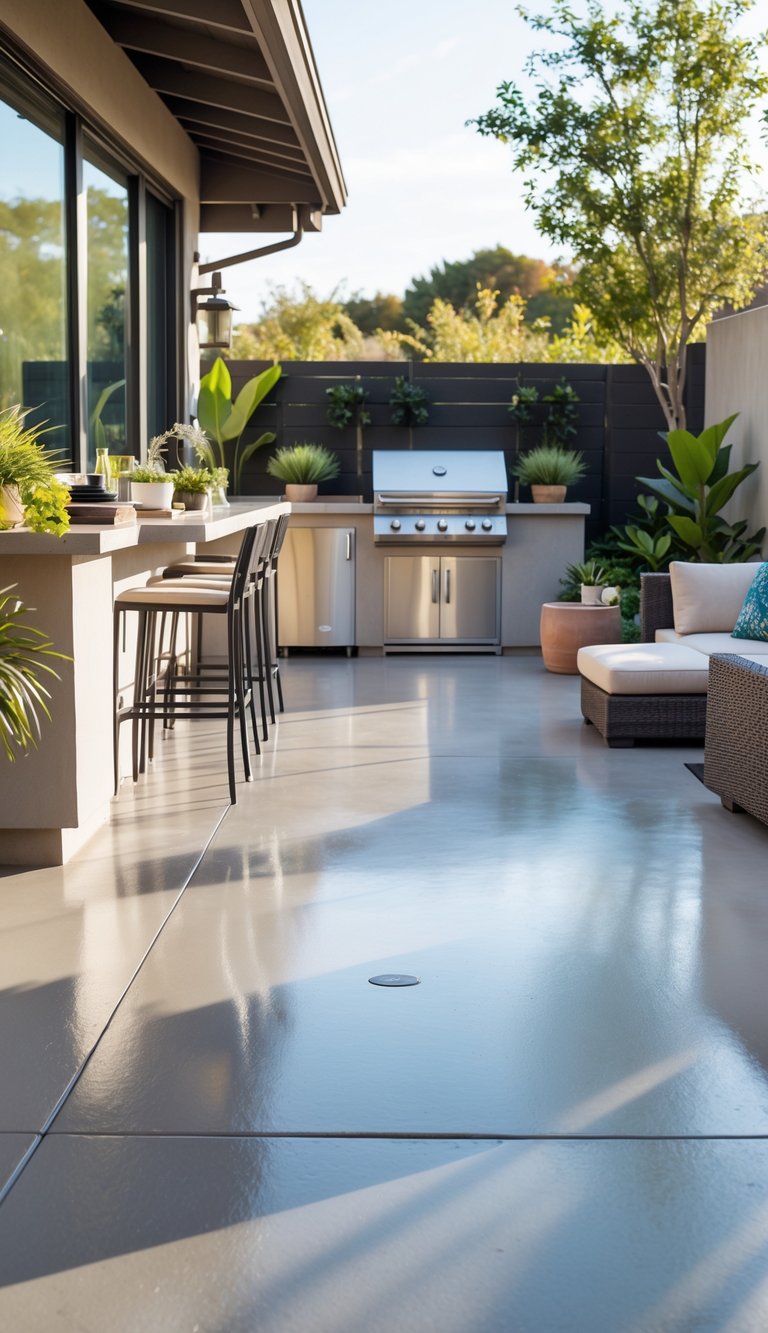
Sealed concrete is another favorite for outdoor kitchens. It’s durable and shrugs off stains and spills, which is handy when you’re cooking outside.
The sealant keeps moisture and wear at bay while giving it a sleek look. You can even add colors or textures if you’re feeling creative.
3) Travertine Stone Tiles
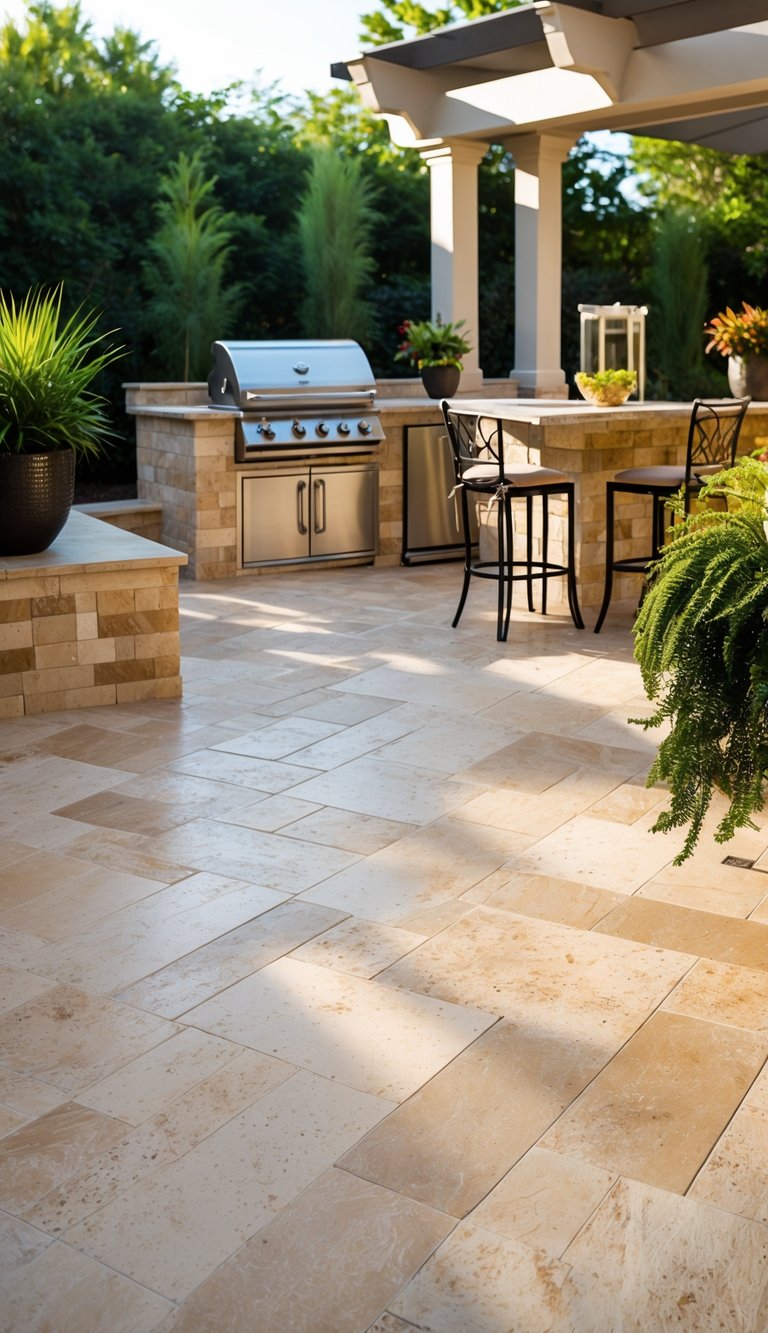
Travertine stone tiles bring a natural, earthy look to outdoor kitchens. They’re tough and don’t mind the heat, so they’re great near grills.
The warm tones and texture help with grip, lowering slip risk. Travertine plays well with wood and metal for a balanced vibe.
4) Granite Stone Flooring
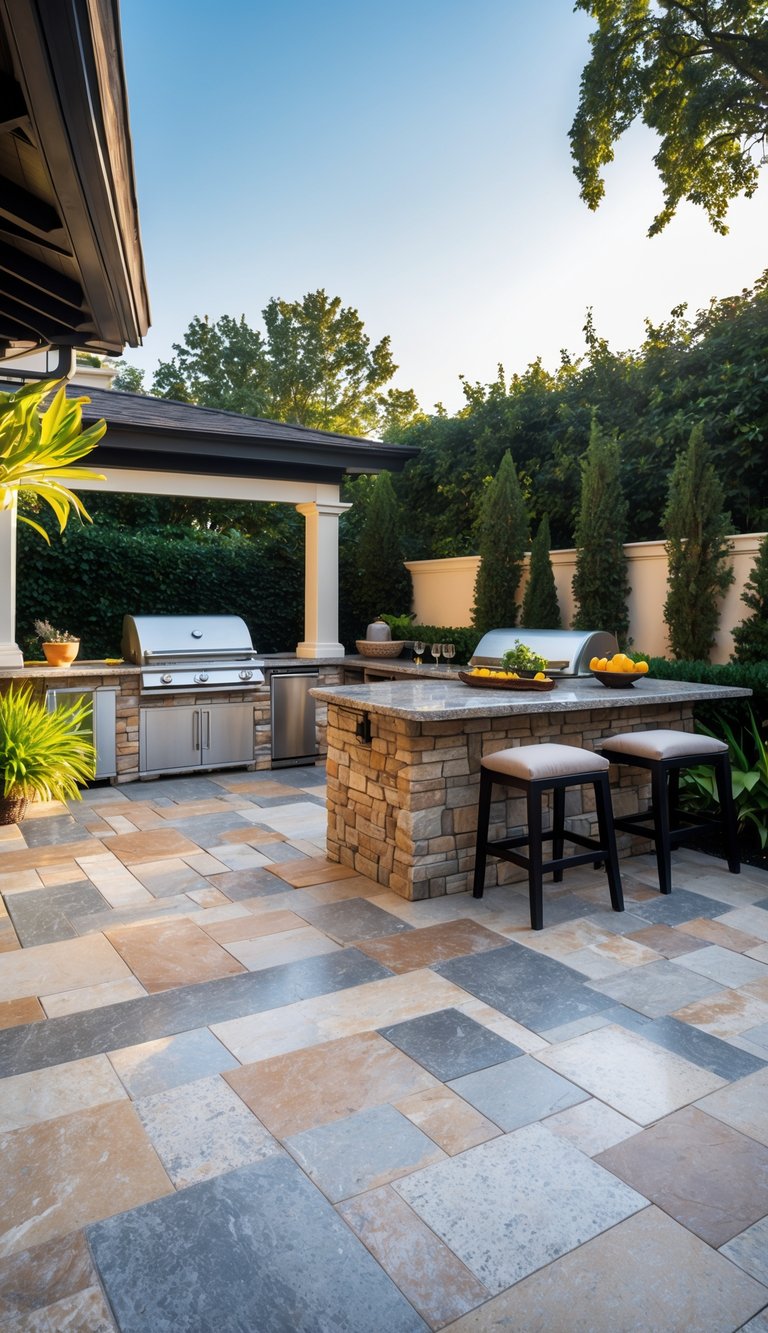
Granite is a solid pick for outdoor floors. It laughs off stains, scratches, and wild weather.
Seal it right and it barely needs attention. The natural look fits just about any outdoor setup.
Granite’s not the cheapest, but it sticks around for years. It shines in busy spaces and places with unpredictable weather.
5) Natural Slate Tiles
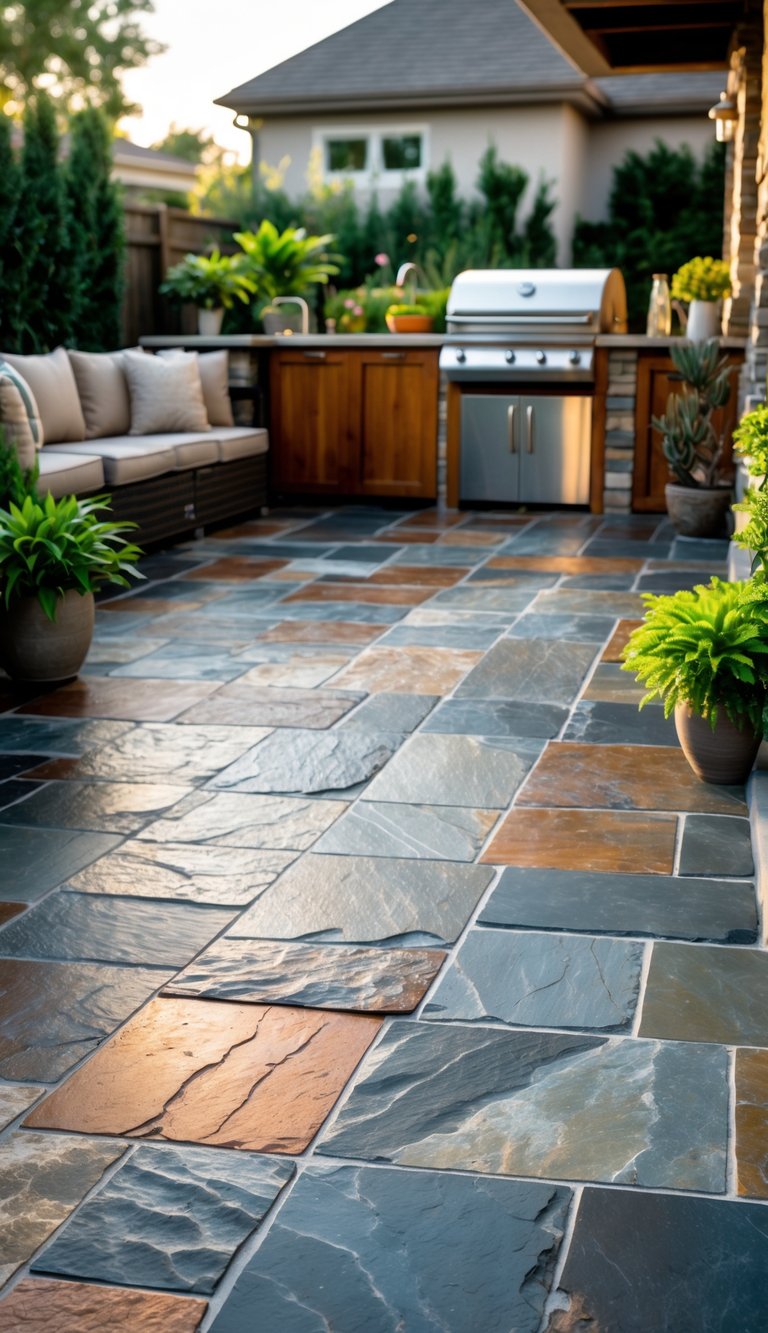
Natural slate tiles bring a rugged, earthy feel to outdoor kitchens. The texture gives good traction, so wet floors aren’t as scary.
They’re sturdy and hold up in different climates. There’s a warmth and timelessness to slate that just works outside.
6) Textured Ceramic Tiles
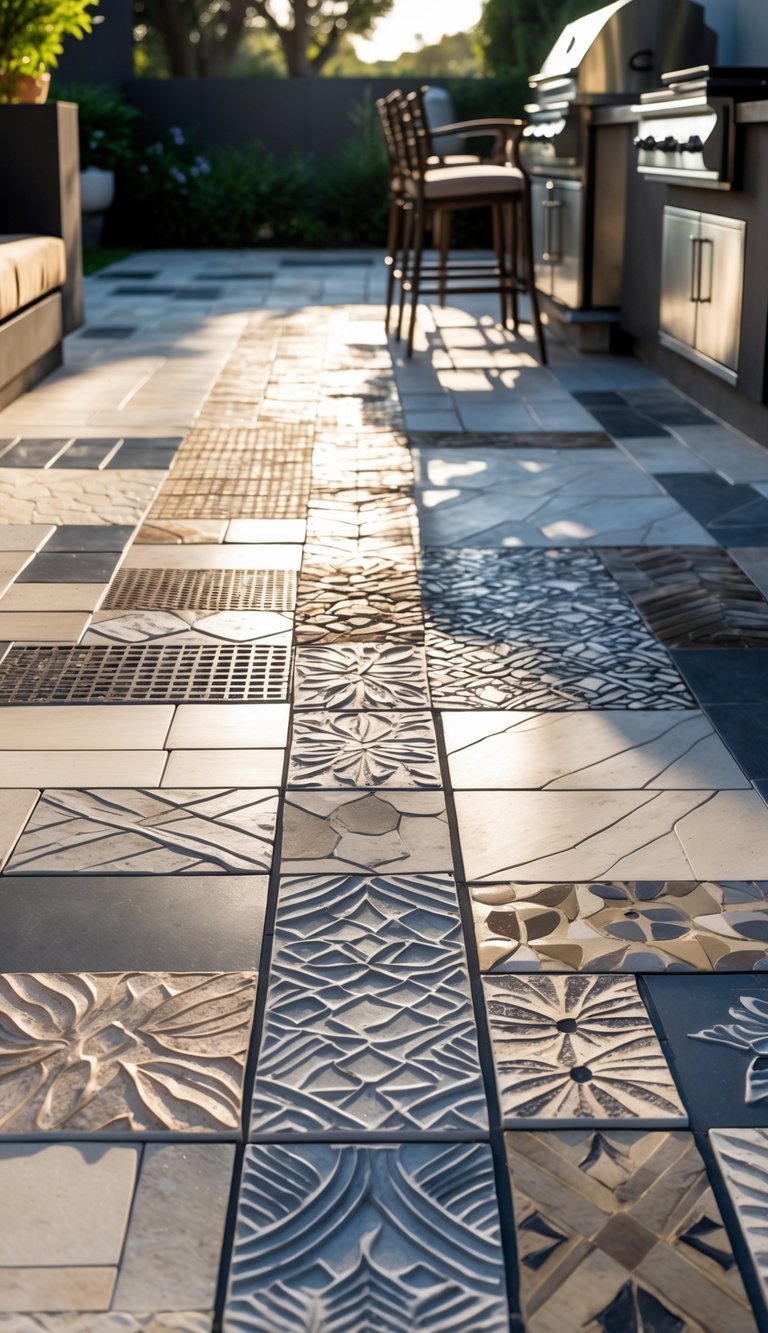
Textured ceramic tiles blend style and practicality. The grip helps prevent slips, especially if the area gets wet.
You can find them in lots of patterns and finishes, so they add some flair without losing toughness. They stand up to weather, too.
Christmas & Year-End Deals On Amazon !
Don’t miss out on the best discounts and top-rated products available right now!
*As an Amazon Associate, I earn from qualifying purchases.
7) Wooden Decking with Weatherproof Seal
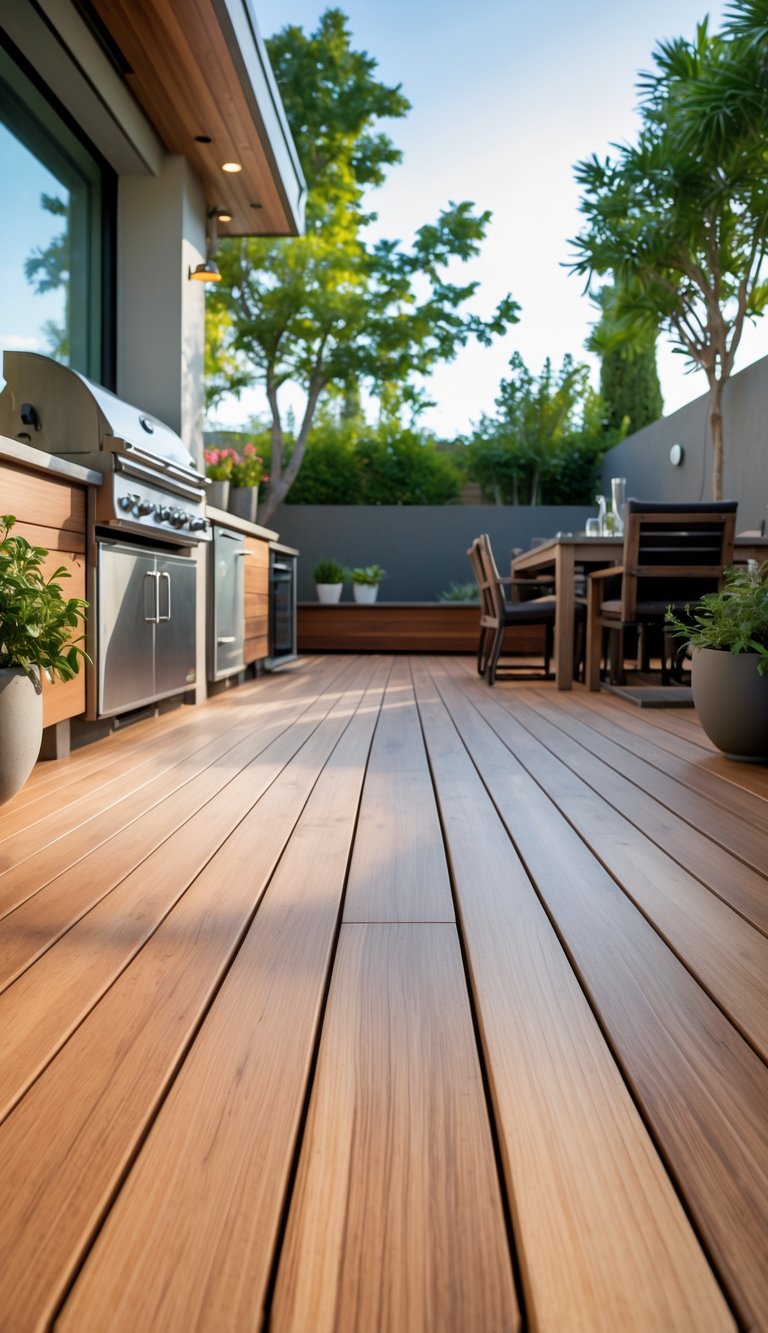
Wooden decking gives outdoor kitchens a warm, inviting feel. A weatherproof seal keeps moisture, sun, and wear from ruining the wood.
This seal stops cracks and warping, so your deck lasts longer. Just remember, you’ll need to reseal it now and then to keep it looking fresh.
8) Composite Decking by Trex
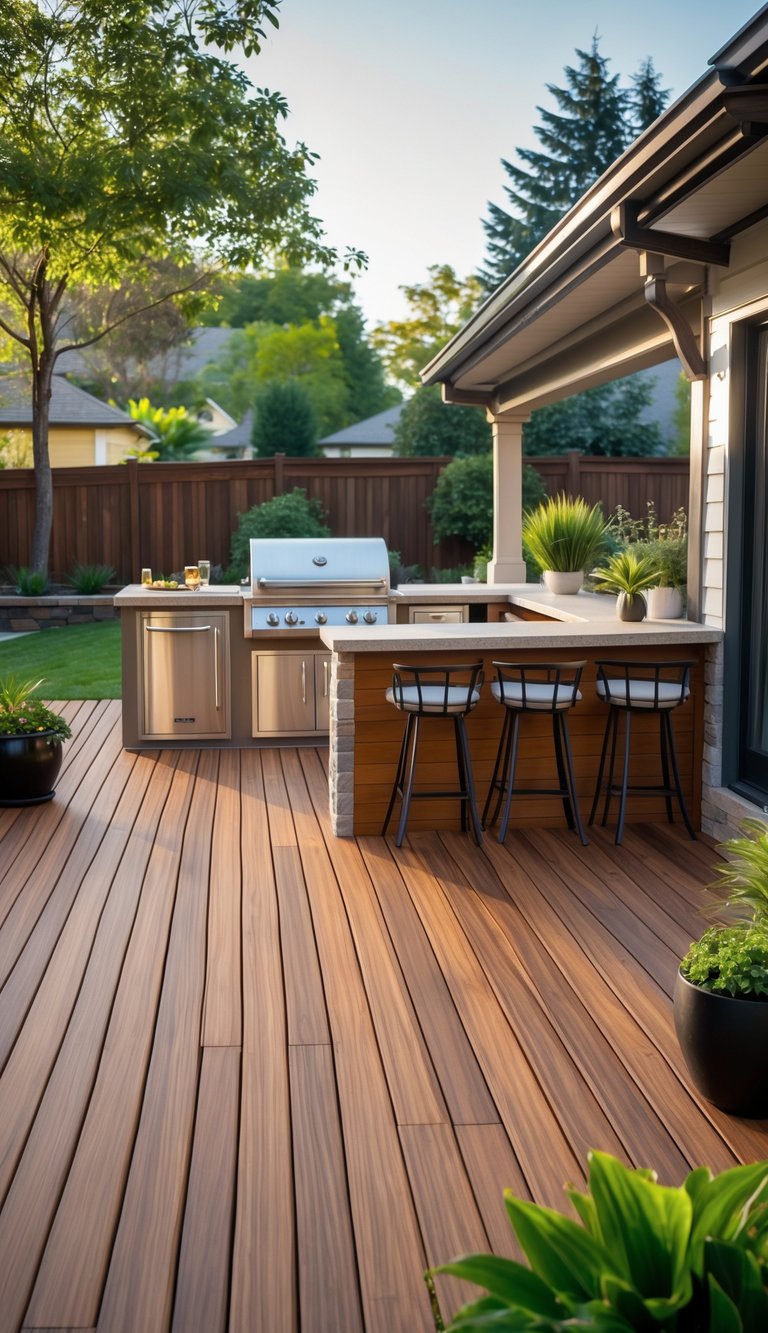
Composite decking by Trex is a tough, low-maintenance choice for outdoor kitchen floors. It handles heat and moisture better than wood, making it a safer bet near grills.
Trex looks sleek and modern, and it holds up under heavy use. No warping, no cracking—just solid performance.
9) Flagstone Pavers
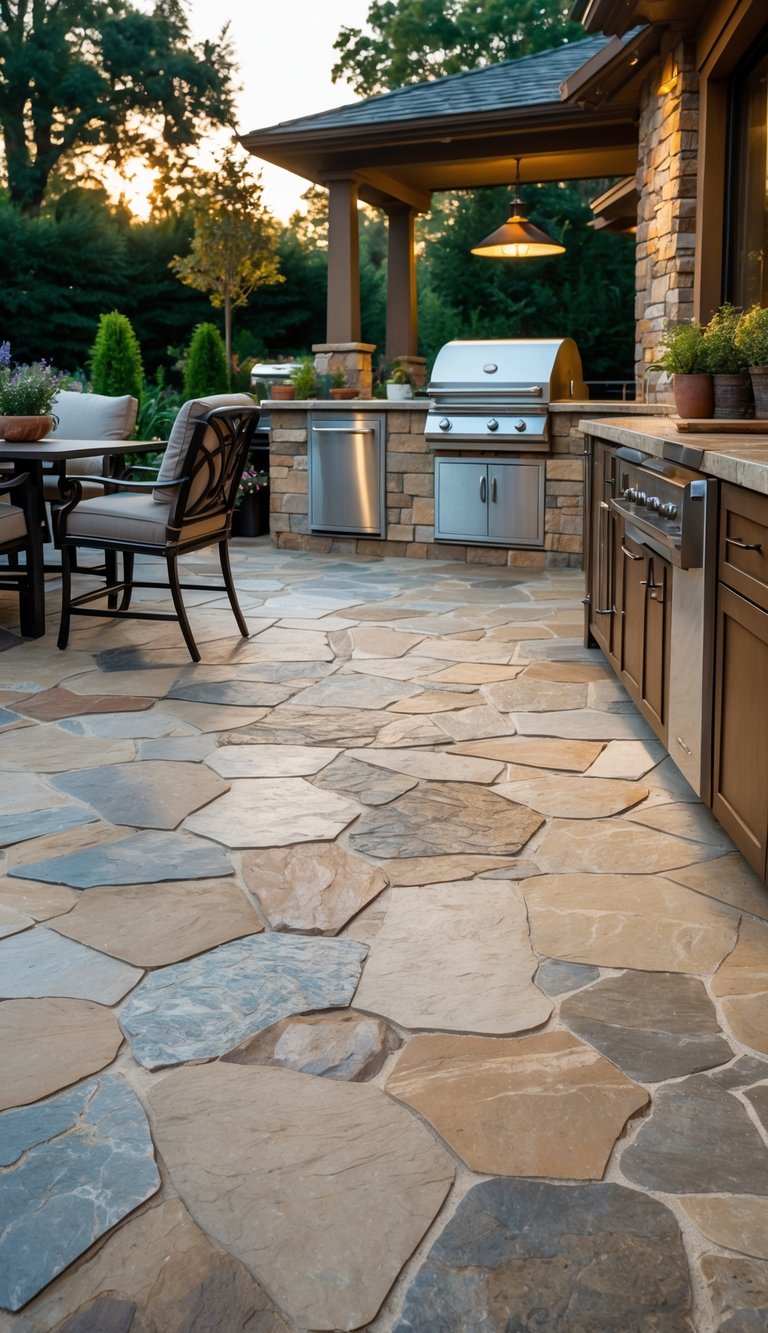
Flagstone pavers add a natural, laid-back vibe to outdoor kitchens. You can mix shapes and colors for unique patterns.
They’re sturdy and handle the elements well. The textured surface helps prevent slips, which is always good news for busy outdoor cooks.
10) Stamped Concrete
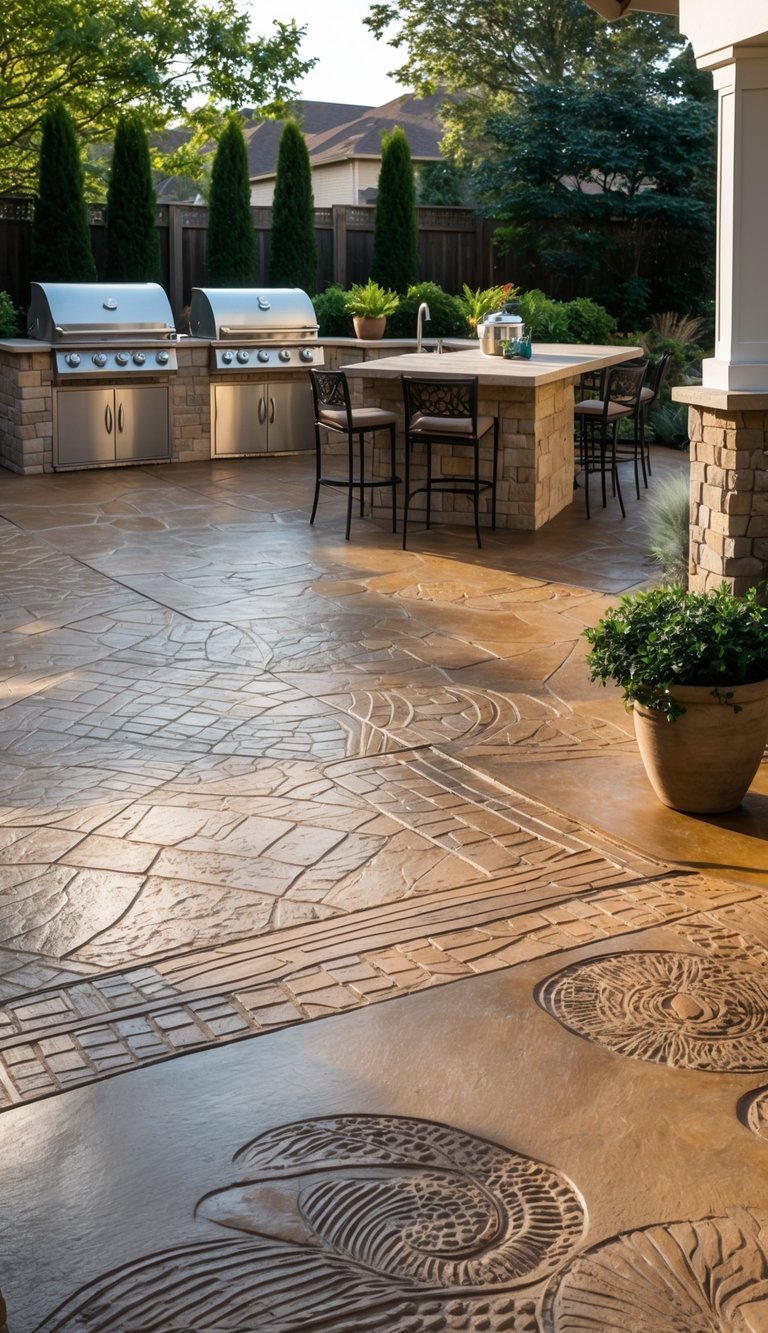
Stamped concrete is a budget-friendly, durable pick for outdoor kitchens. It can look like stone or brick without the hefty price tag.
This flooring fits right in under patio covers and blends with other outdoor features. It doesn’t mind heavy use or changing weather.
11) Cobblestone Flooring
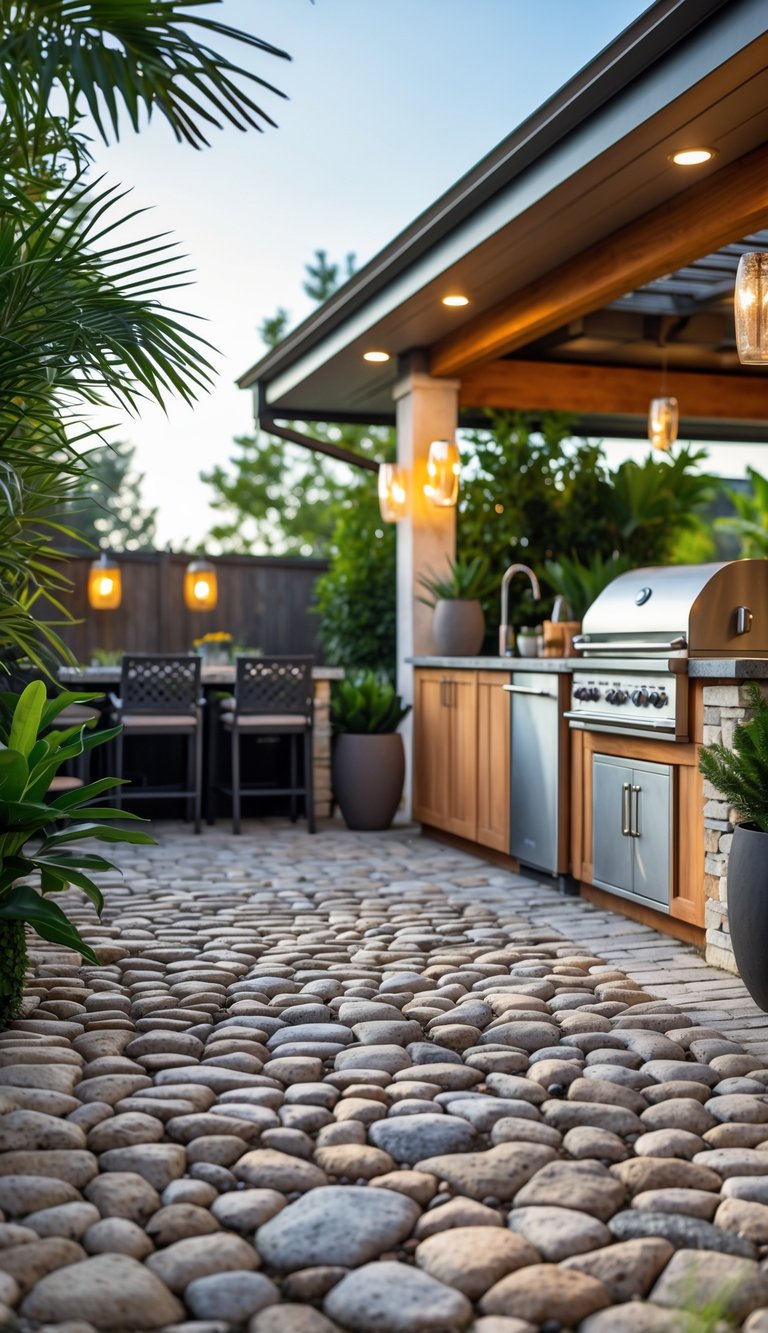
Cobblestone flooring brings old-school charm to outdoor kitchens. It’s tough and handles lots of foot traffic without losing its good looks.
Cobblestones work great with stone walls and granite counters for a natural feel. They also offer decent grip, and mixing in flagstone can make things more interesting visually.
12) Outdoor Carpet Tiles
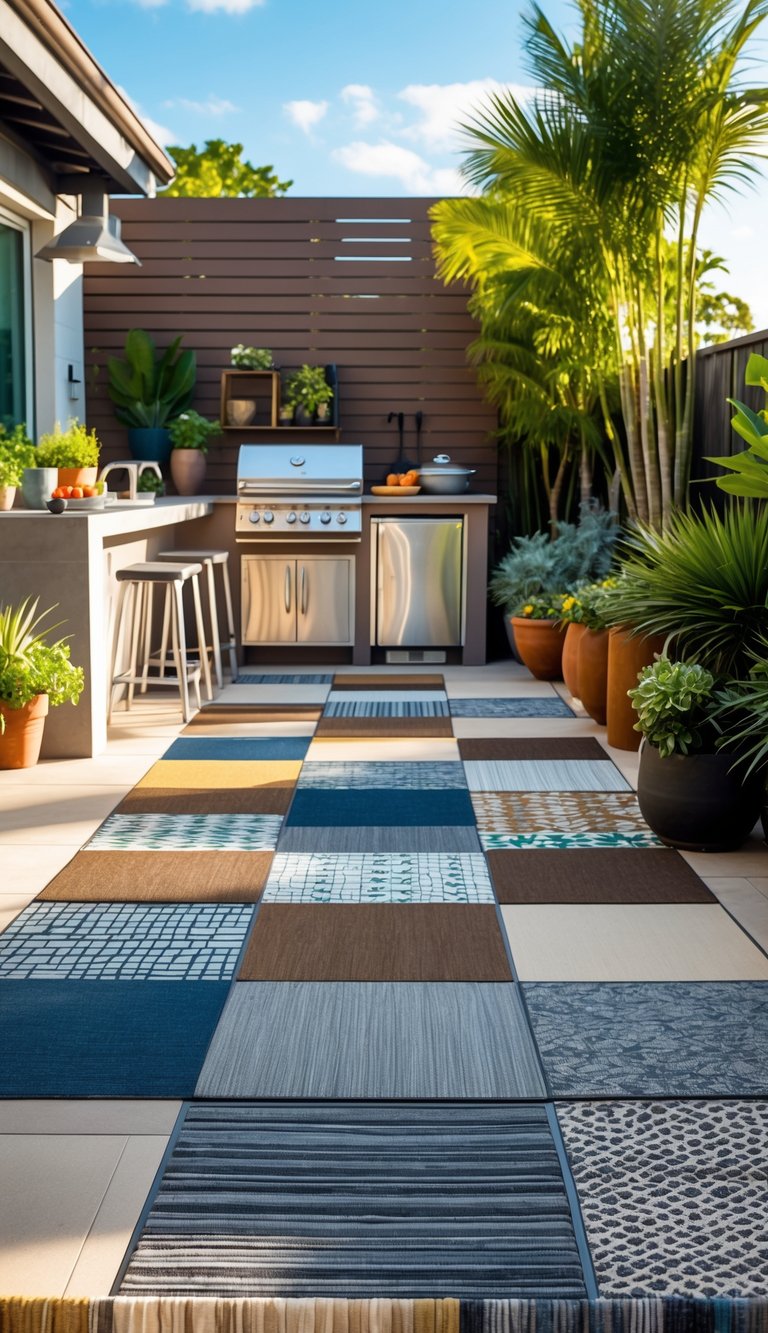
Outdoor carpet tiles are a flexible choice for kitchen flooring outside. You can pick from all sorts of shapes, sizes, and colors to match your style.
They work well on decks or patios, and you can get creative with patterns. Neutral shades like beige and gray keep things chill and classic.
Christmas & Year-End Deals On Amazon !
Don’t miss out on the best discounts and top-rated products available right now!
*As an Amazon Associate, I earn from qualifying purchases.
They’re made for the outdoors, but you’ll want to take care of them to keep them looking good.
13) Brick Pavers
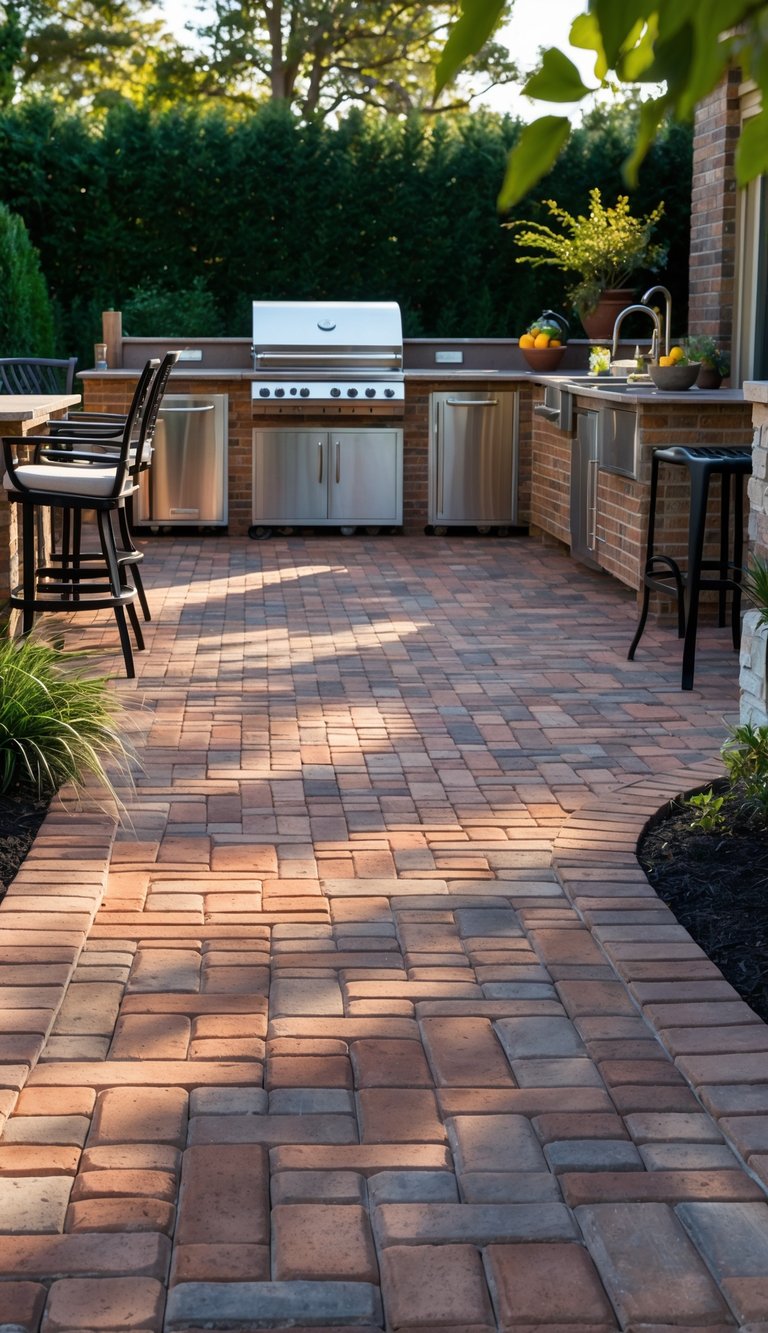
Brick pavers bring a classic look to outdoor kitchens. They’re sturdy and don’t need much fuss.
The texture adds warmth and charm to the space. Brick pairs easily with stone or granite counters.
With lots of colors and patterns, you can match your home’s look. Brick pavers are both practical and good-looking.
14) Terrazzo Flooring
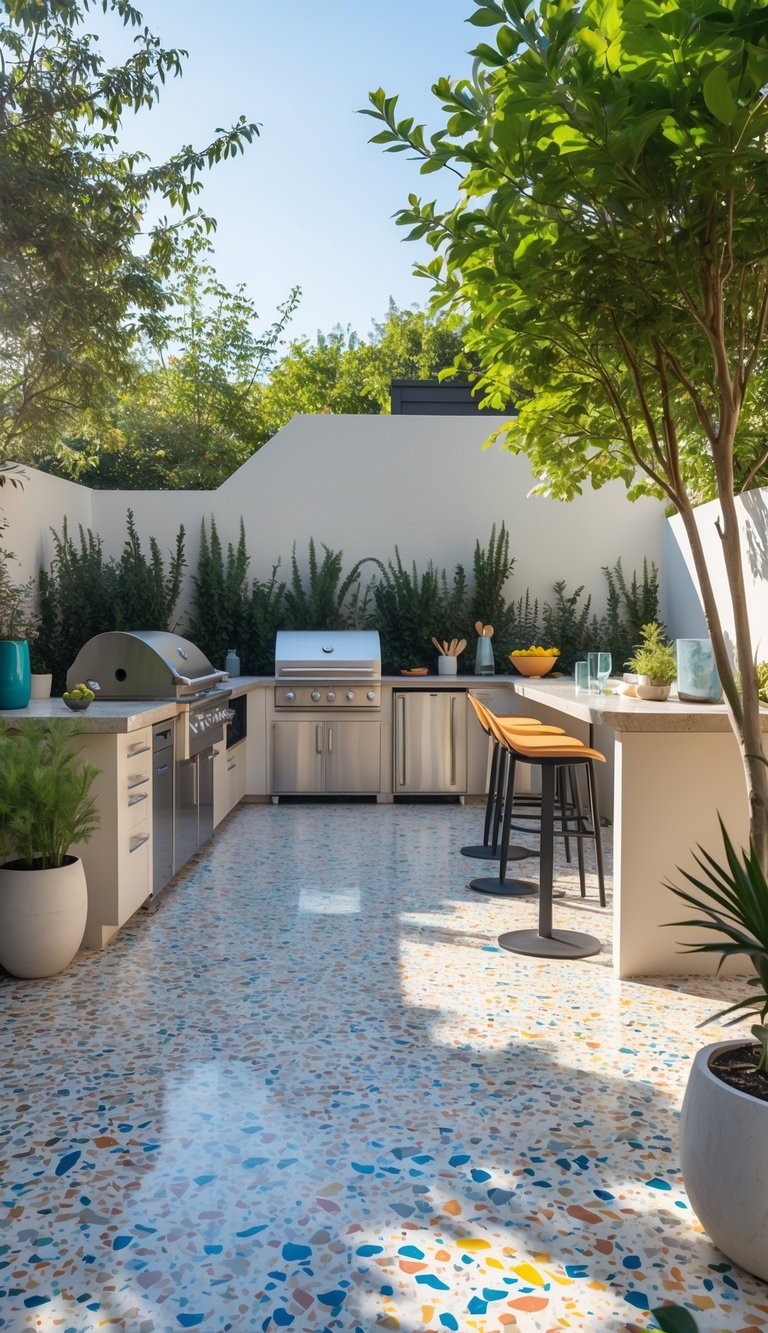
Terrazzo flooring is a tough option for outdoor kitchens. It’s made by mixing natural stone chips with cement or resin, so the surface is strong.
There are loads of colors and patterns to choose from. Terrazzo is easy to clean, which is always a plus outside.
15) Slip-Resistant Rubber Tiles
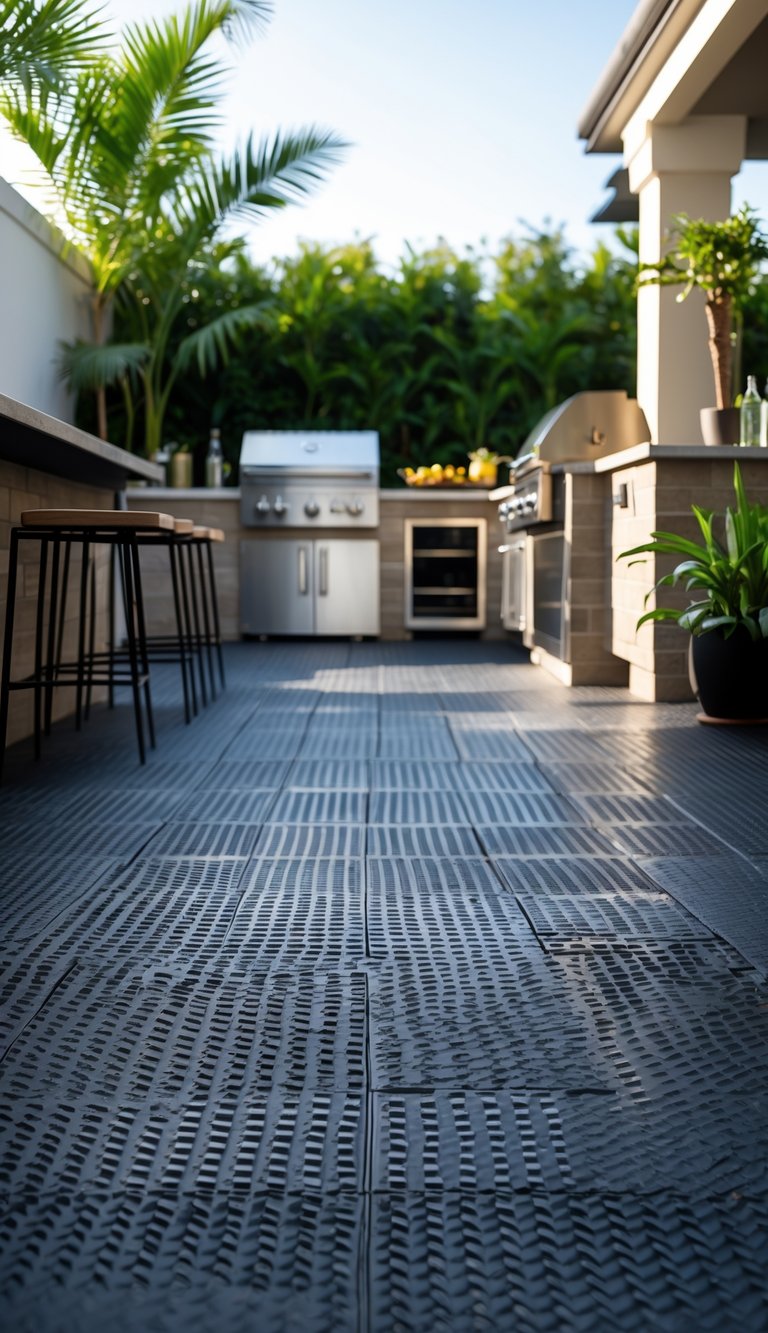
Slip-resistant rubber tiles make outdoor kitchens safer, especially if things get wet. They grip well and help stop falls.
These tiles can handle the weather and last a long time. They’re also comfy to stand on if you’re cooking for a while.
Rubber tiles are easy to install and maintain. Just sweep or mop now and then to keep them looking sharp.
Key Considerations for Outdoor Kitchen Flooring
Picking outdoor kitchen flooring means weighing strength, upkeep, and safety. Think about how the material will last, how it stands up to weather, and whether it’ll protect the people using the space.
Durability and Maintenance
Durability really matters outside. The flooring should resist scratches, stains, and the wear from spills and foot traffic.
Porcelain tile gets a lot of love because it’s solid and doesn’t chip or crack easily. Granite and travertine are also long-lasting, as long as you seal them.
Christmas & Year-End Deals On Amazon !
Don’t miss out on the best discounts and top-rated products available right now!
*As an Amazon Associate, I earn from qualifying purchases.
Maintenance plays a role in how much effort you’ll put in. Sealed concrete is pretty low-maintenance and easy to clean.
Wood decking looks fantastic, but you’ll need to reseal it regularly to keep rot away. If you pick something that resists mold and mildew, cleanup gets a whole lot easier—and safer.
Weather Resistance
Outdoor kitchen floors face all sorts of weather. Some materials just shrug off rain, snow, and blazing sun better than others.
Porcelain and sealed concrete really shine here. They handle wet climates and don’t get damaged easily.
Natural stones are a mixed bag. Granite deals with moisture pretty well, but softer stones can erode if they’re out in harsh weather year after year.
Wood? Well, it needs some TLC. Without protection, it can warp or rot when water gets in.
Honestly, picking a floor that fits your climate makes a big difference. The right choice keeps things safe and looking good longer.
Safety Features
Safety’s a big deal for outdoor kitchen floors. You want something that’s not slippery, especially after a rain or a spill.
Textured stone, rough concrete, and a few types of tiles give better grip than smooth ones. It’s worth thinking about what you’ll actually feel underfoot.
Heat’s another thing people sometimes forget. Dark floors can get scorching hot in the sun—nobody wants to hop around barefoot.
Lighter colors or materials that don’t soak up heat help keep things comfortable. Sometimes it’s the little details that matter most.
Installation and Longevity Tips
How you put the floor in—and how you take care of it—makes a huge difference. Good installation means fewer headaches later. A little maintenance here and there adds years to its life.
Christmas & Year-End Deals On Amazon !
Don’t miss out on the best discounts and top-rated products available right now!
*As an Amazon Associate, I earn from qualifying purchases.
Professional vs. DIY Installation
Honestly, most outdoor kitchen floors are best left to the pros. Porcelain tile or natural stone need precise cuts, sealing, and leveling. Otherwise, cracks and water damage sneak up fast.
DIY works for simpler options like vinyl or laminate. Those usually come in planks or sheets that are easier to manage.
If you don’t install it right, though, you might end up with uneven spots or a floor that wears out way too soon.
Cost difference:
- Going pro usually adds $5-$8 per square foot.
- Thicker tiles (about 3/4 inch) run 15% more, but they hold up better and really need someone who knows what they’re doing.
Thinking about your own skill level—and how tricky the material is—can save you from repairs down the road.
Extending Floor Lifespan
Regular cleaning and sealing help keep outdoor flooring in good shape for longer. Porcelain and stone floors especially need periodic resealing to shield them from stains and weather.
Skip harsh chemicals—they can wreck the finish. Instead, reach for gentle cleaners made for your specific floor.
After installation, look for cracks or loose tiles and fix them fast before they turn into bigger problems. Tossing mats near cooking spots cuts down on wear from spills and heavy foot traffic.
If you’ve got good drainage, you’ll avoid standing water and most of the headaches from moisture or frost.





